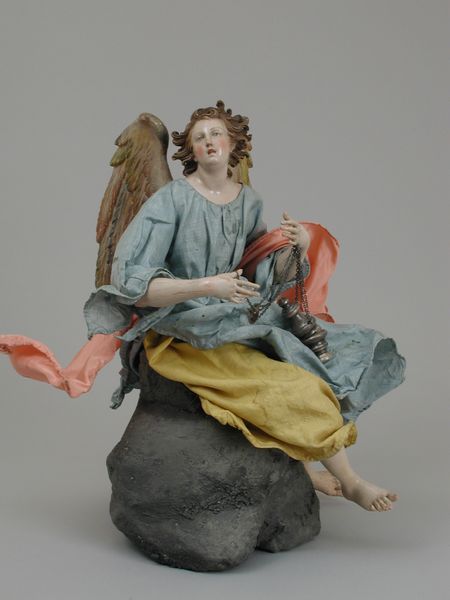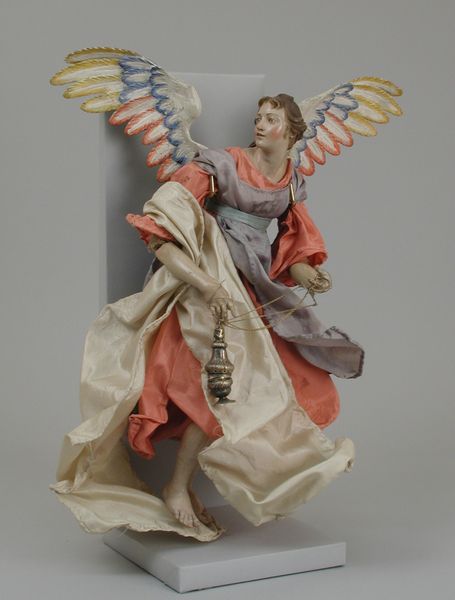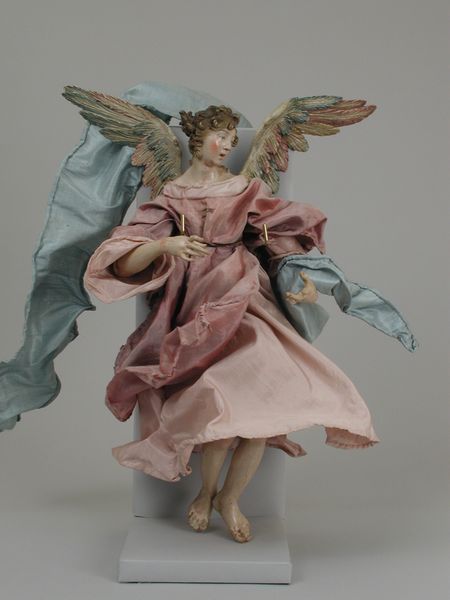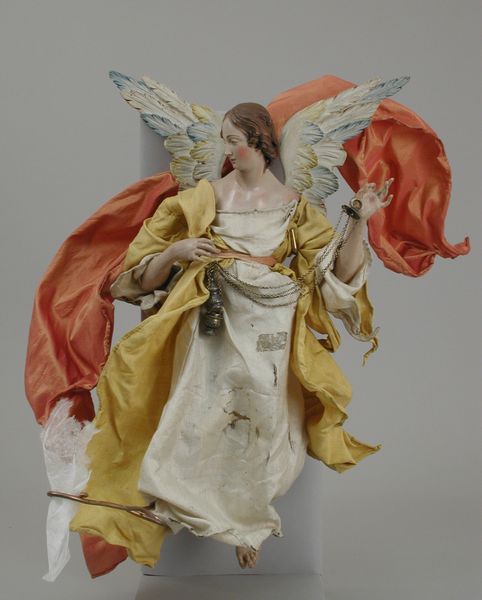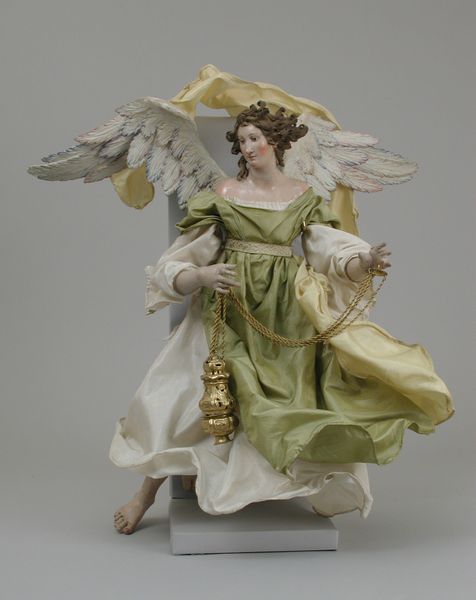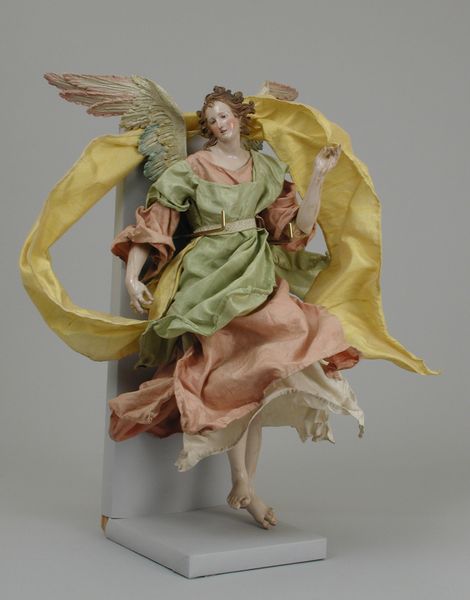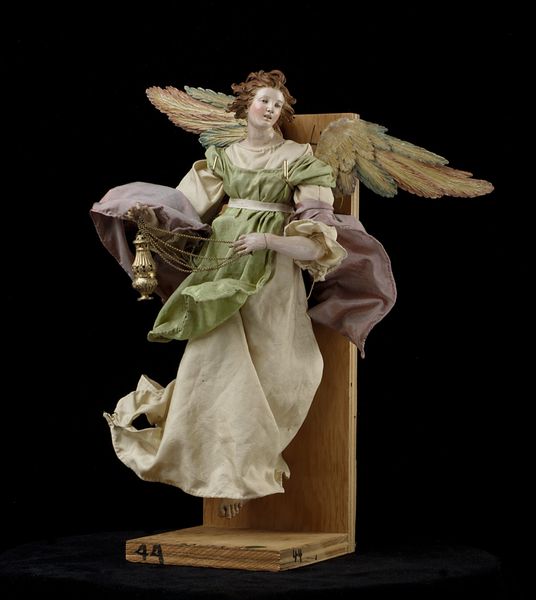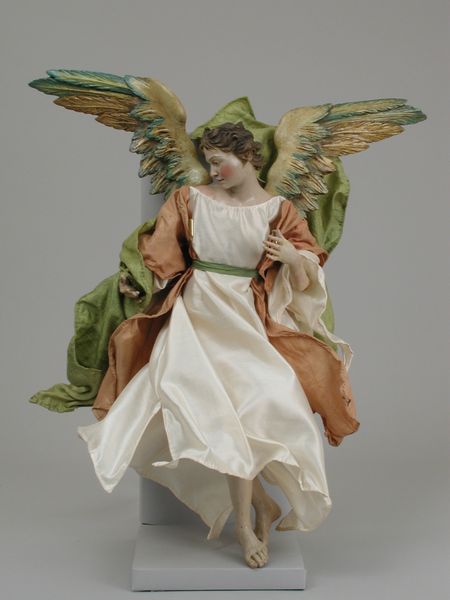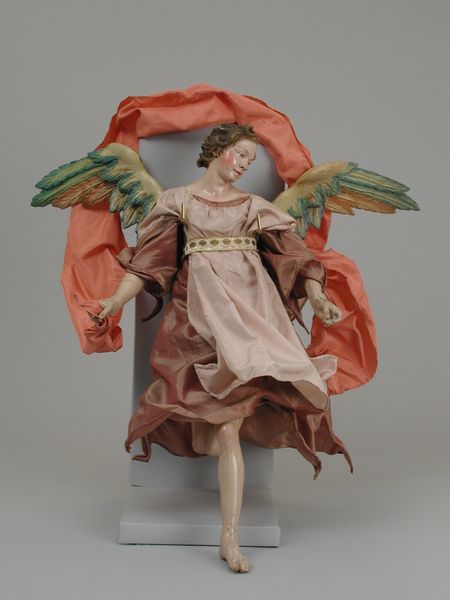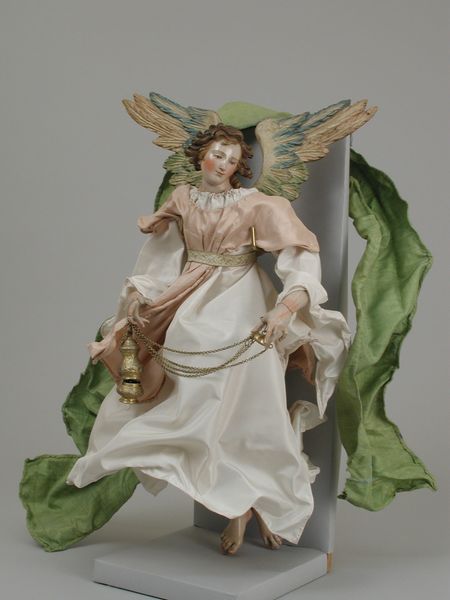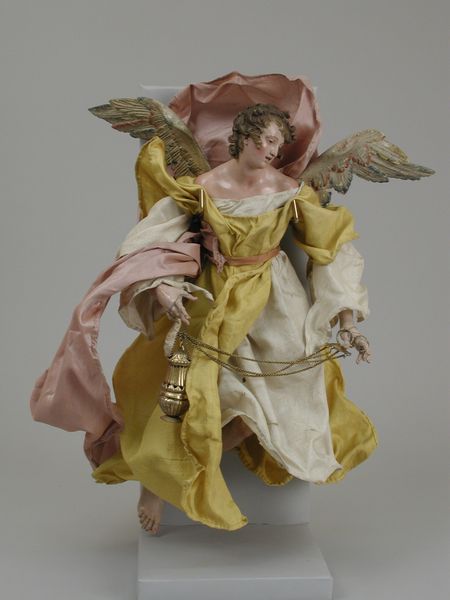
Dimensions: H. 15 1/4 in. (38.7 cm.)
Copyright: Public Domain
This ‘Angel’ was crafted by Lorenzo Mosca, an Italian artist, in the 18th century, using terracotta, wood, and linen. Angels in art history, particularly during the Baroque period, acted as messengers of the divine, often rendered with idealized features. Mosca’s angel reflects this tradition, yet there’s also a striking human quality to the figure. The angel's bare foot and the vulnerability in its gaze create a sense of intimacy. This invites us to consider the complex interplay between the celestial and earthly realms. While seemingly a straightforward religious depiction, Mosca’s angel also speaks to broader issues of representation and identity. Who gets to embody the divine and what do they look like? Here we see someone with very westernized features embodying a divine messenger. This perpetuates a visual language that has historically privileged certain representations. Consider your own place in relation to this image. What does it mean to see divinity represented in this way, and how does it shape our understanding of ourselves and others?
Comments
No comments
Be the first to comment and join the conversation on the ultimate creative platform.

